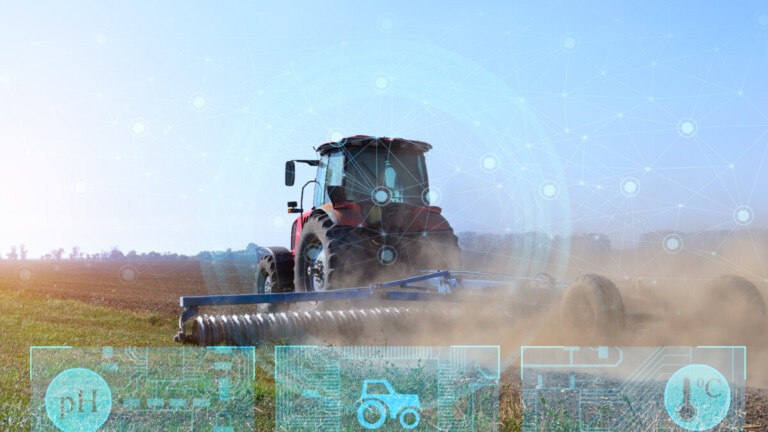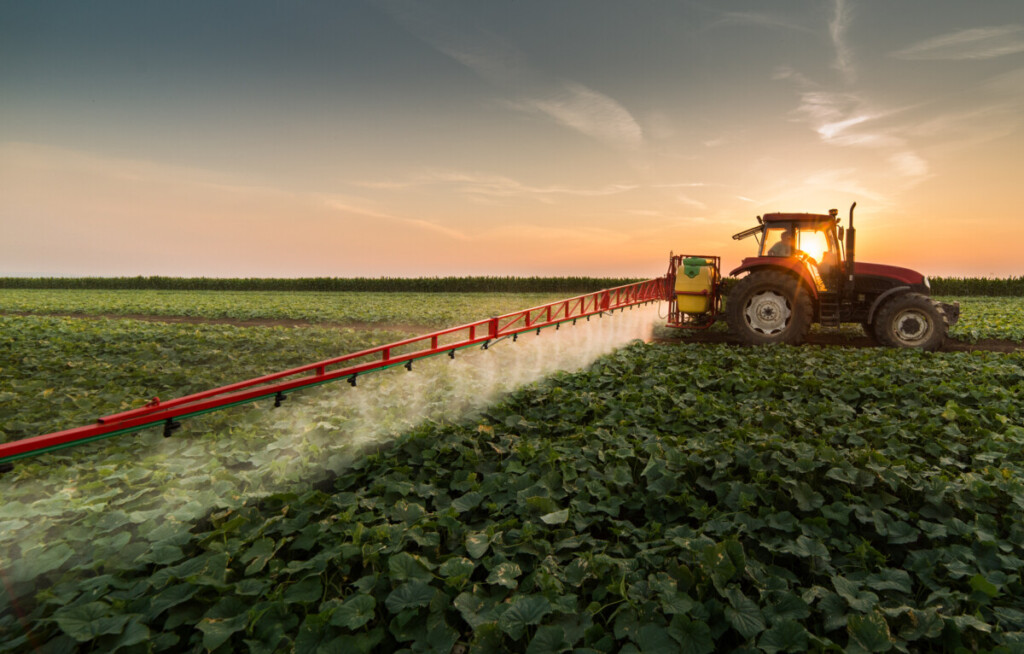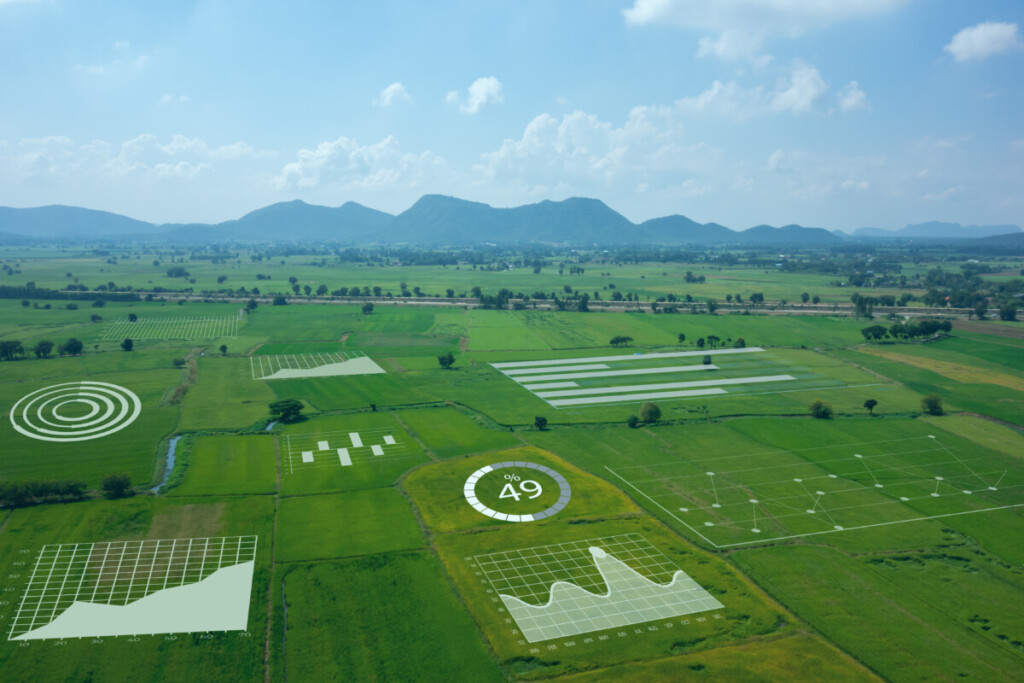How the IoT Supports Precision Farming for More Sustainable Agriculture

IoT applications in agriculture have brought a great deal of innovation to farming at a time when the planet’s resources are straining under the weight of population growth. The use of IoT in this sector is growing rapidly – as the IoT in agriculture market reached US$12.5 billion in 2021, and is expected to hit an estimated value of US$28.56 billion by 2030.
IoT sensors and networks can support agricultural production in a number of ways, from keeping chickens healthier to GPS mapping and management of crops for more efficient yield. IoT can help farmers monitor water use in real-time, preserving precious, shared local resources, while supply chain asset tracking can ensure food produced on farms reaches consumers’ tables efficiently.
Data supplied by IoT devices also helps farmers practice what is known as “precision farming,” a technique that allows growers to minimize the chemicals (such as pesticides and fertilizers) used in the farming process. This practice can have very real implications for the health of the planet.

Climate-Friendly Farming, With Precision
Precision farming utilizes data from IoT devices deployed in the fields to help make targeted decisions about managing crops, transporting yield, and maintaining facilities/equipment. Farmers use a combination of sensors in their fields and data analytics tools and dashboards to glean insights about what their crops need to thrive. It is one-way smart ag is helping farmers stay productive and boost ROI. It also helps create more climate-friendly farms.
“Modern agriculture is part of the climate solution,” said Kellie Bray, CropLife America (CLA) Chief of Staff. “Fuel savings alone due to precision ag tools is the yearly equivalent of taking nearly 200,000 cars off the road, all while preventing an area equal to 4.5 Yellowstone National Parks from being added to production because of yield increases.”
Data collected through IoT sensors can ensure farmers deliver just the right amount (and kind) of pesticides/herbicides to ensure good crop yield without over-applying those chemicals. This not only affects the sustainability of what’s growing in the fields, but also benefits the adjacent ecosystem of the farm itself.
How Precision Farming Helps Minimize Herbicide Runoff
A recent industry study showed that precision farming has cut herbicide use in the United States by 30 million pounds, or 9% of the estimated total application. That same study found that broader adoption of technological solutions could reduce herbicide by another 48 million pounds, or another 15%.
Traditionally, farmers sprayed herbicide and fertilizer in consistent amounts over their fields, a strategy that often led to over-applying these chemicals in an effort to suppress weeds and volunteer plants. A recent report estimates this method has resulted in 40 percent of fields being over-fertilized. Precision farming allows farmers to deploy variable rate technology, which leverages IoT sensors or pre-programmed maps to dispense just the right amount of herbicide for a particular section of the crop.
When farms use more herbicide than they need, it leaches into groundwater through the soil or runs off into waterways. This can negatively affect fish and invertebrates in those ecosystems. A McGill University study examined how glyphosate, a commonly-used weed killer, can cause a loss of biodiversity, which can in turn make ecosystems more vulnerable.
“We observed significant loss of biodiversity in communities contaminated with glyphosate,” said Andrew Gonzalez, McGill University’s Liber Ero Chair in Conservation Biology. “This could have a profound impact on the proper functioning of ecosystems and lower the chance that they can adapt to new pollutants or stressors. This is particularly concerning as many ecosystems are grappling with the increasing threat of pollution and climate change.”
More than 2 billion people live in countries where there is not enough access to fresh water, and humans are already polluting water in rivers and lakes faster than natural purification processes can renew those resources. This is one of the reasons IoT’s role in limiting agriculture’s impact on groundwater is so critical.

Connectivity Can Challenge Farmers Adopting Smart Ag
Even when farmers are deeply committed to protecting local ecosystems through sustainable smart ag, they can be challenged by the process of setting up a working IoT network. The USDA estimates only half of U.S. farms currently use a broadband connection, with 70 percent utilizing cellular data plans to access the Internet.
This digital divide that separates rural communities from their urban counterparts can make it challenging for farmers to transmit the large quantities of data collected by IoT devices on their properties. That data is critical to informing the decisions needed to run a cleaner, more sustainable farm.
There are also real physical barriers to connectivity on farms. For example, agriculture in the Plains states may take place on wide, flat fields, but a farm that has rows of trees, hills, or terraced land may not have the same degree of line-of-sight to the source of the signal. Plants all contain water, as well, which can reflect, refract, and interrupt connectivity across fields and orchards.
The increase in rural demand for telehealth and remote work in the COVID-19 era has strained bandwidth further, leaving less available for farmers trying to implement these technological upgrades.
Despite the challenges, there are very real opportunities to improve agriculture’s sustainability with help from IoT solutions. The potential for cleaner farms that have less impact on surrounding ecosystems is a goal worth pursuing.
***
To learn how Soracom has supported precision farming and smart ag through IoT applications, connectivity, and more, read our agriculture case studies or contact us for a free consultation.



